My local river was closed this spring—a first for the Ottawa. Mega-flood conditions were responsible. The authorities made all boat travel off limits until the declared state of emergency ended. Four hundred kilometers of river was closed. This idea of river closures is not new to some jurisdictions, especially where rivers run through parks, but closure on a scale this large was something new for Canada.
When you learn only six of those 400 kilometers has whitewater, then you realize paddlers got caught in the net of a policy intended to keep motorboaters off of the swollen, debris-filled main river and reservoirs. The famous waves of the Ottawa’s Main and Middle channels were inadvertently off-limits to both kayakers and the commercial rafting companies from May 15 to May 30, 2019. The rafting companies, losing valuable early-season income, lobbied for an exemption to no avail.
Like many others, I hiked in to see what the river looked like. I didn’t need a closure to tell me not to run it—the river looked mean and surly with nowhere to go but down the class-huge middle at high speed. The river was ripping through the trees a hundred meters in from what would be its normal river banks. The main flow was barely visible so far away. You also likely wouldn’t be surprised to hear there was more than one clandestine illegal run made. For some, this was the opportunity of a lifetime.
Risk theorist Jens Rasmussen’s work on safety performance inspired the term risk creep. Rasmussen identified the inevitable trial-and-error learning that goes on as individuals build competency at a given task. Done well, the learning builds efficiency. Done poorly, this trial-and-error wanders toward the edge of what he called acceptable performance.
In paddling terms, this means we explore outward and challenge our abilities, through which we gain competency. However, we may find ourselves at some point beyond our abilities, over our heads and in trouble. Risk creep is the term to describe the inadvertent movement towards the edge of our skills, without recognizing the risk level has been slowly, perhaps imperceptibly, rising. Risk creep compounds when the individuals do not have the experience or knowledge to realize they have traveled too close to the edge, or when the risk has risen to dangerous levels.
Our brains are poorly equipped to recognize we are slowly getting too tired, too cold or too close to the edge of our abilities. We are ill-equipped to recognize risk creep.
Flood levels are a pretty good example of risk creep. Day by day, the water level rises, slowly changing the river features and slowly ratcheting up the risk level. How high is too high? For private paddlers—as opposed to commercial rafting companies, which is a wholly different story—this is an individualized question, based upon one’s competency and risk tolerance. The problem is, without a bunch of experience at this level, how does one know what one’s limits are?
Psychologists have repeatedly proven humans are terrible at recognizing slow change, or in clinical terms “gradual change awareness.” YouTube the term to prove this point to yourself. Our brains are poorly equipped to recognize we are slowly getting too tired, too cold or too close to the edge of our abilities. We are ill-equipped to recognize risk creep.
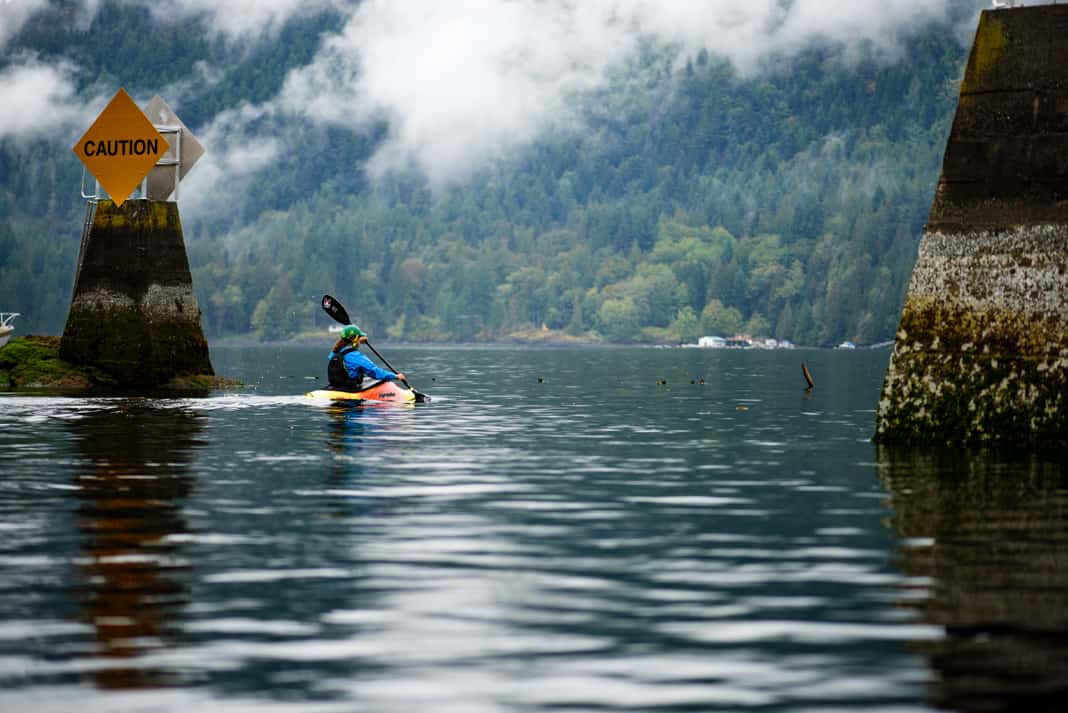
Photo: Daniel Stewart
So, what can we do about risk creep, if we know it is a trap we fall into? Create triggers, cut-offs and turn back times. We use our own or our collective knowledge to establish limits for ourselves. When spring flow hits a certain cms/cfs, we find somewhere else to go. What happens when a mega-flood presents yet-unseen water levels? In the case of this spring, the authorities’ response was to close the river. For a rogue paddler unwilling to pass up the opportunity, the closed status was a clear indication this was not just another high water run. The closed status worked as a trigger to establish that old norms don’t apply.
While the whitewater paddling and rafting community were pretty critical about who gets to decide when a river is closed and by what criteria, the closure status sent a clear message—a threshold had been crossed and we were in new territory. And it forced everyone to acknowledge it.
Jeff Jackson is a professor at Algonquin College on the banks of the Ottawa River.
There may be old boaters and there may be bold boaters, but there are no old, bold boaters. | Photo: Daniel Stewart




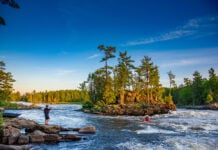
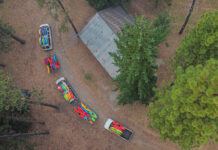
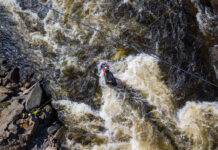
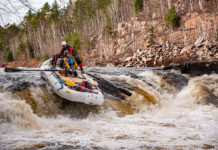

Awesome points Jeff!
Great summary of what group leaders face when they take diverse group on a high adventure trip. Everyone is cautious at first but as the group becomes more confident there is a trend to take more chances. There is also the tendency to take more chances to get home sooner. Someone has to say stop when the element of risk is too high for the weakest paddler. This becomes a problem if there is no clear group leader or the leader does not have the necessary experience. Your analysis has forced me to think about decisions I have made that led to a “near miss”.
As a former marathon racer I know how to tell when my body is reaching its limits, and I am ALWAYS keenly aware of all conditions when running whitewater or remote wilderness trips where the price for failure can be high. This comes down to each individual and his or her own personal ability to size up the situation and then address it appropriately. Most of those with whom I paddle share that philosophy because we understand the risks we take and prepare to minimize them to the greatest extent possible. We are also keenly aware that the safety of the entire group can be put in jeopardy by our own failures to be honest with ourselves when undertaking a risky activity.
As to your tag line, I doubt that guys like Tao Berman, Tyler Bradt or Knox Hammack would agree with you. Those guys are doing some pretty hairy stuff and living to tell about it, though I would never do that myself!
I have seen it on a few occasions where people push their limits mostly to finish a trip on time, their agenda, not river conditions or weather conditions.